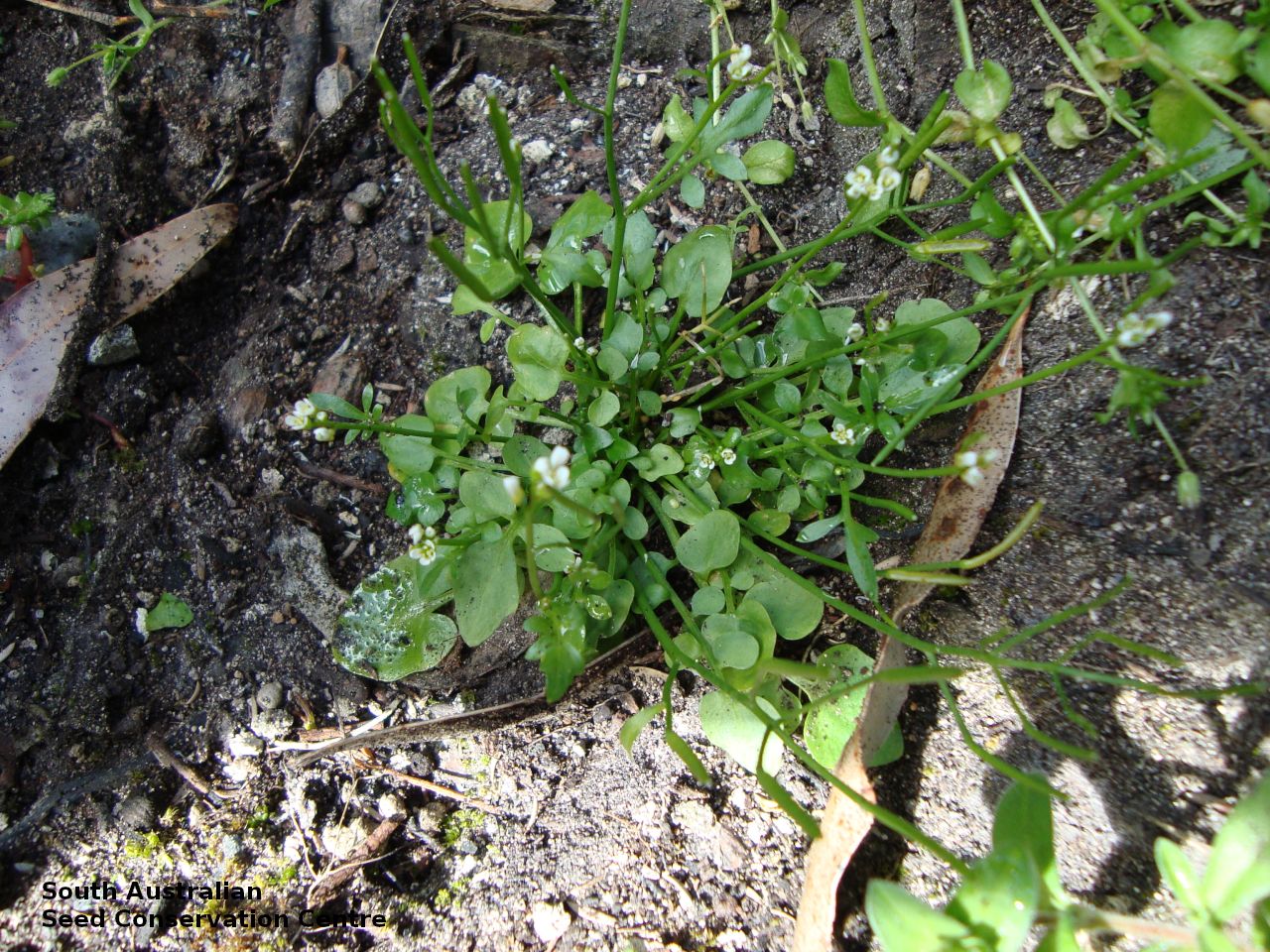
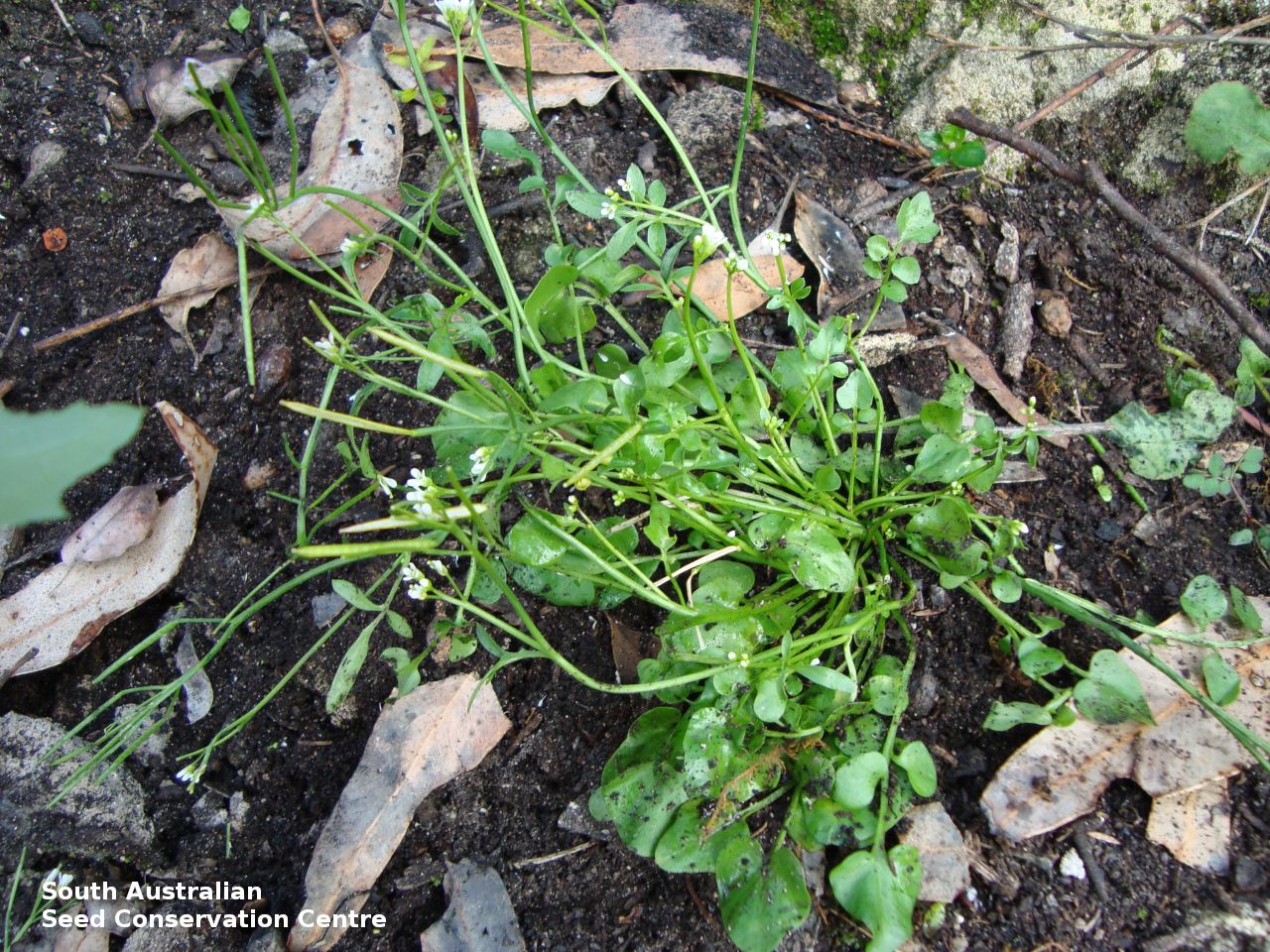

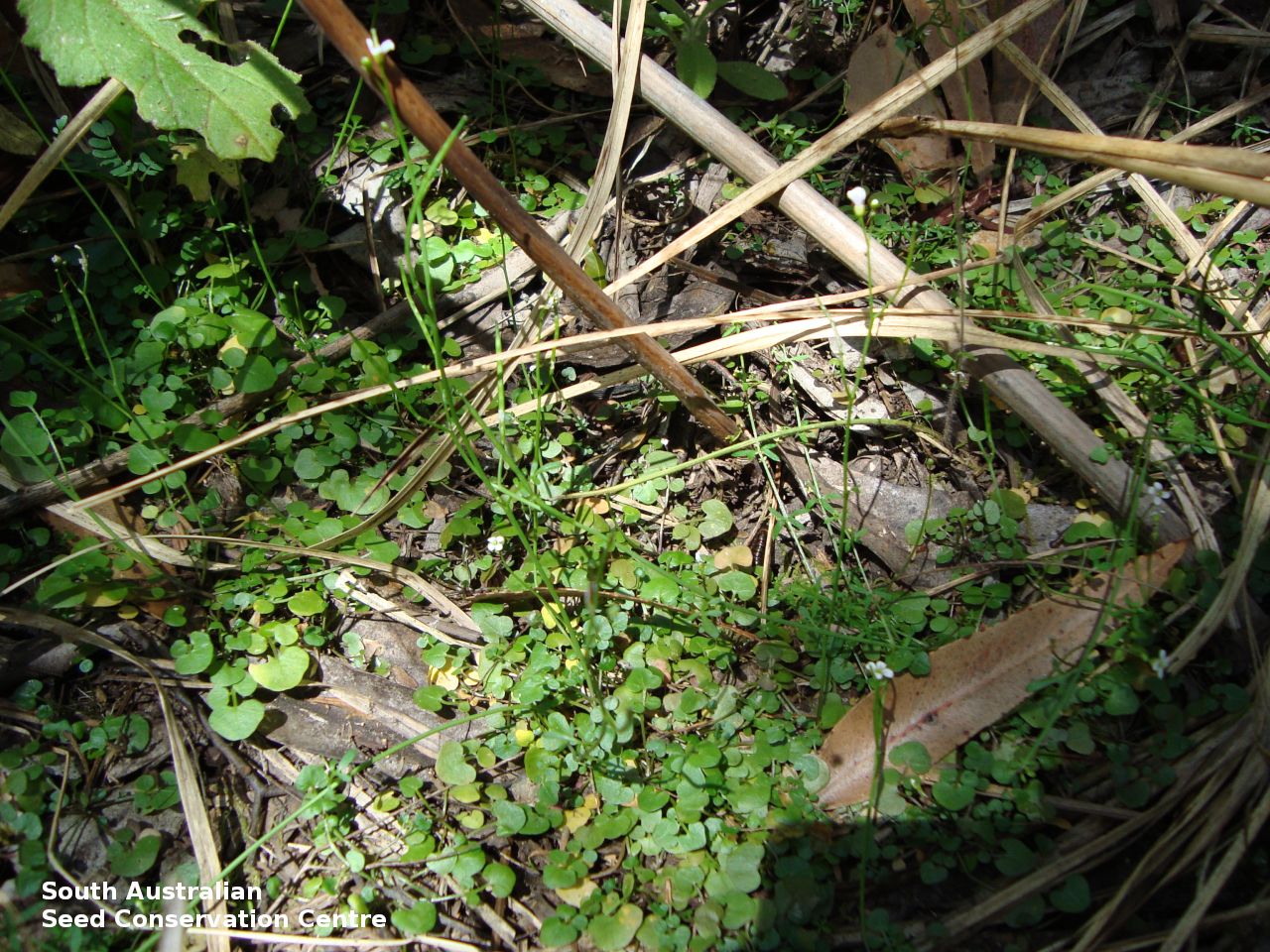
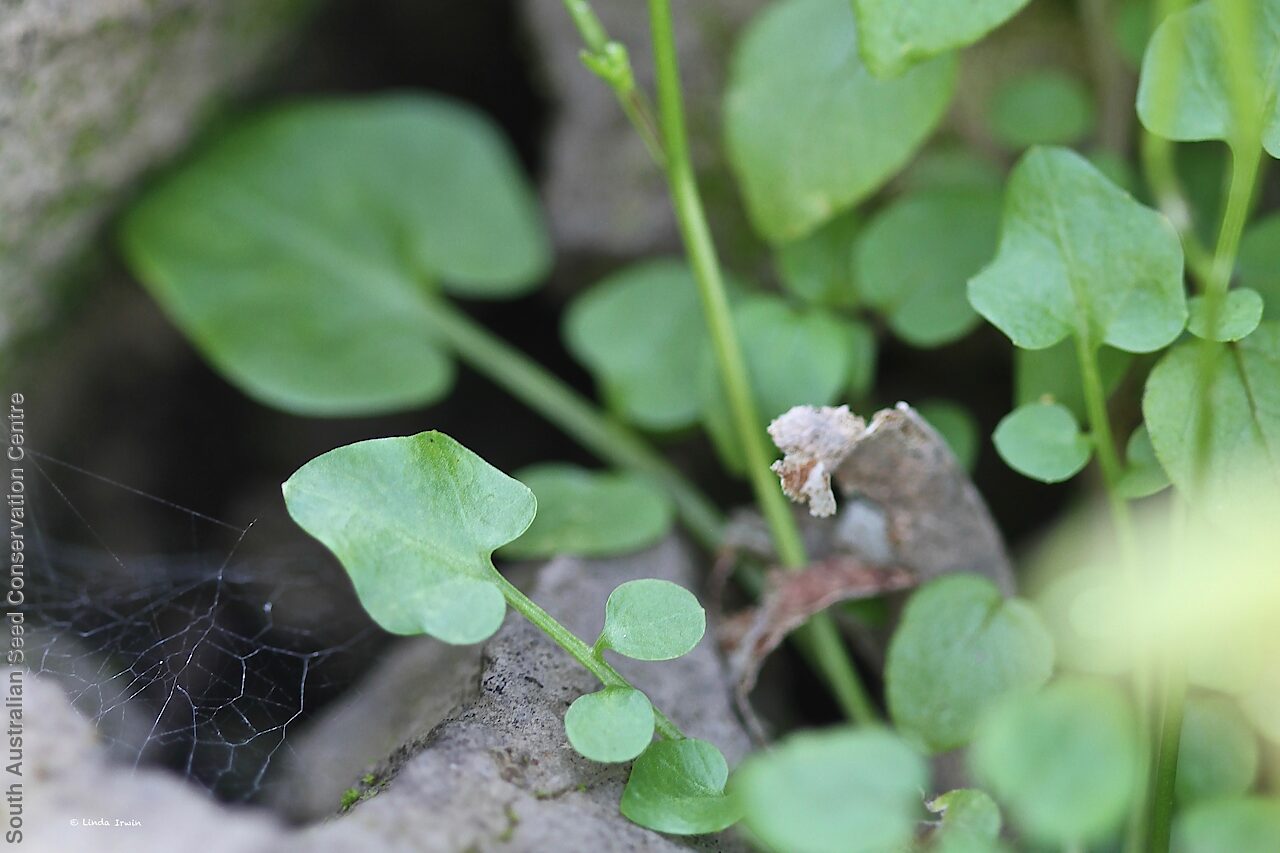
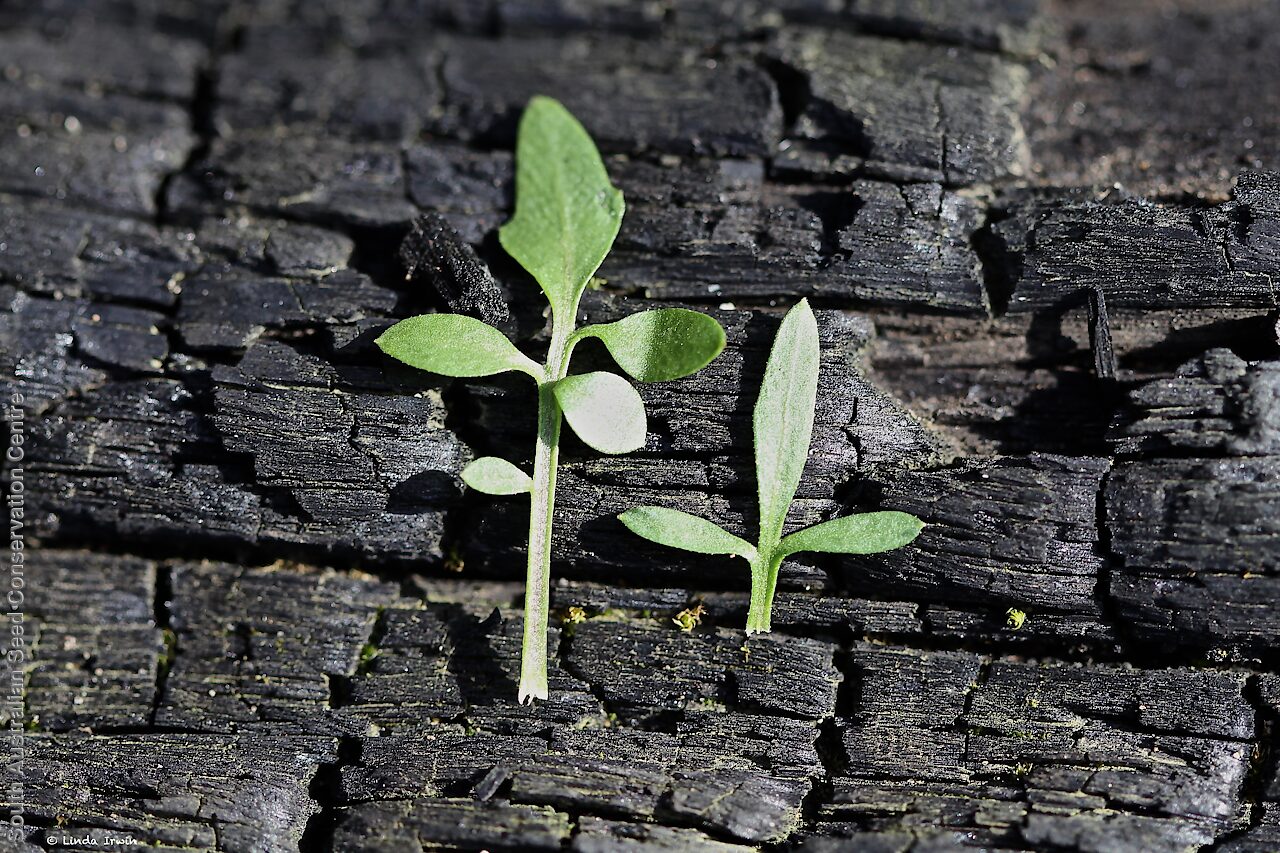
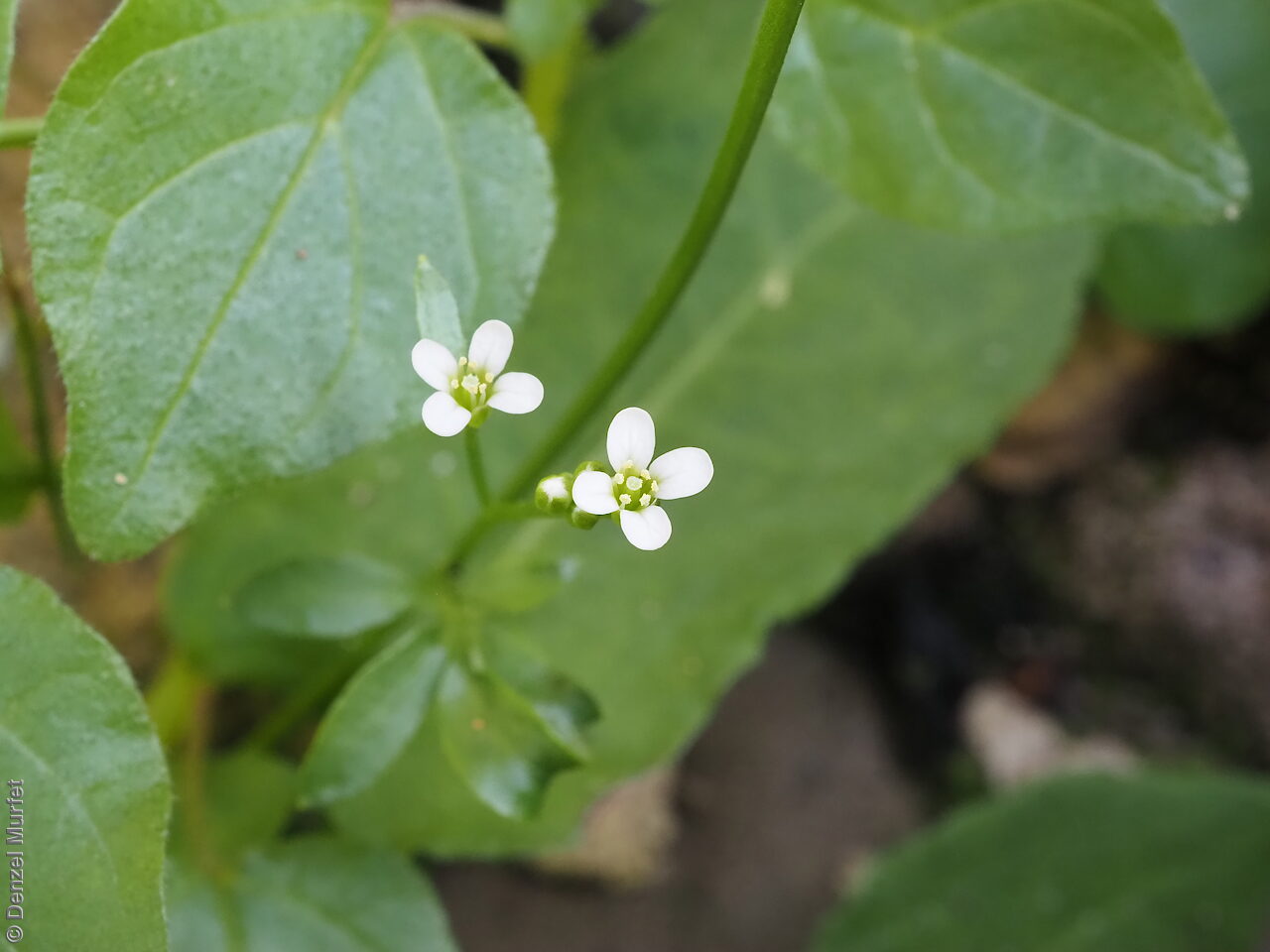
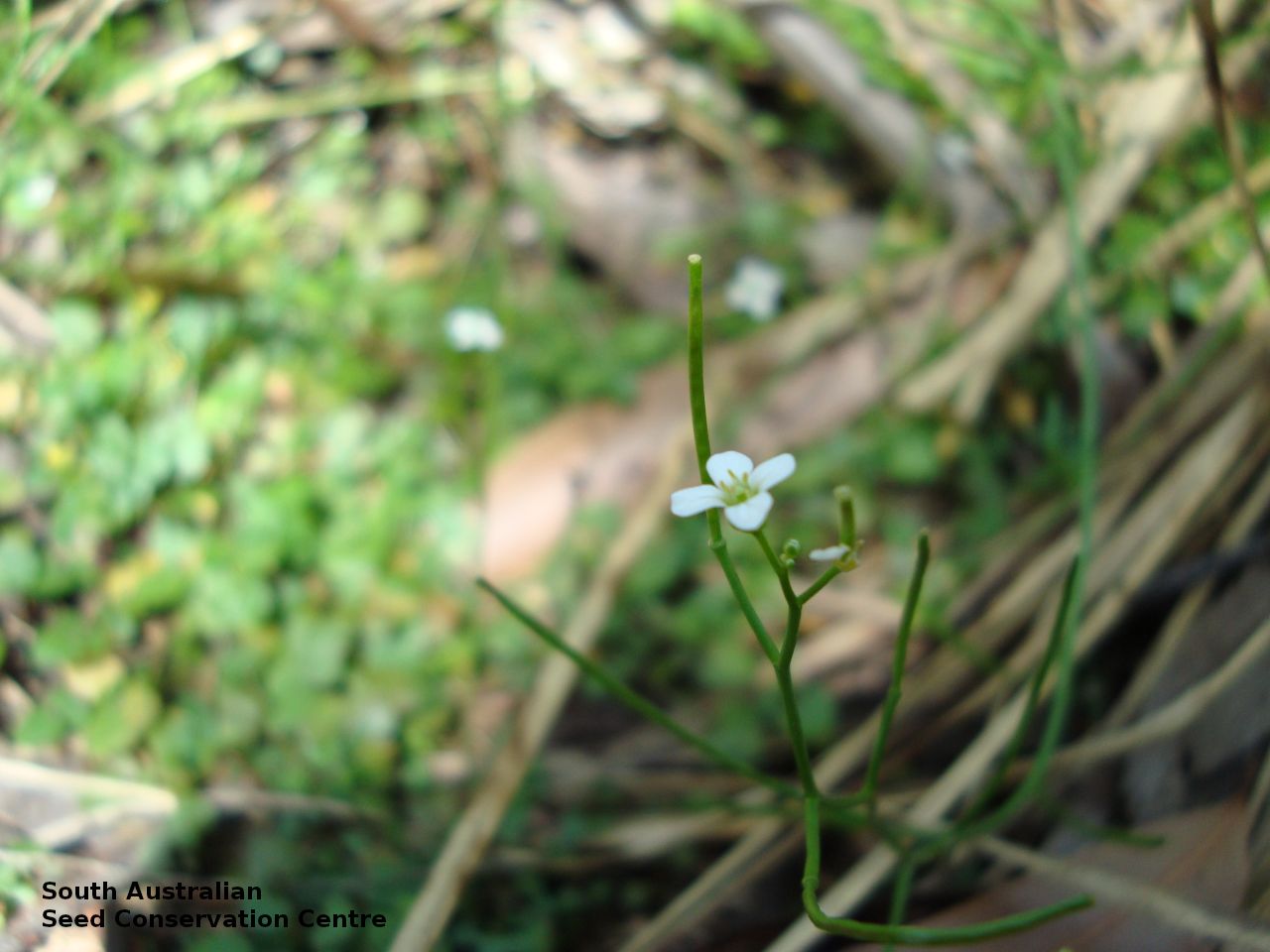
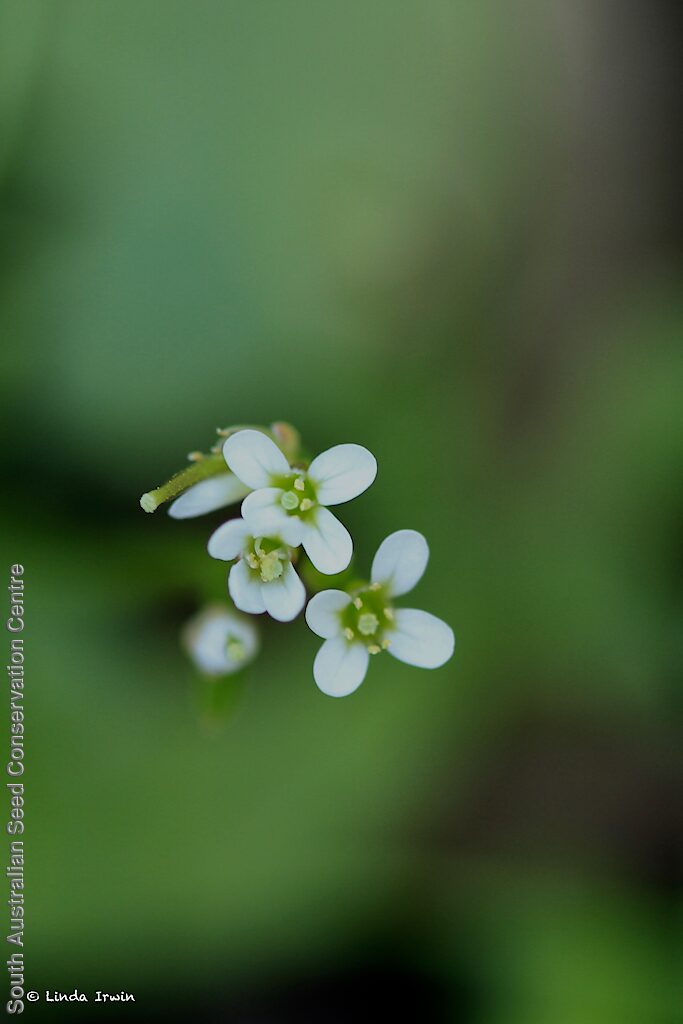
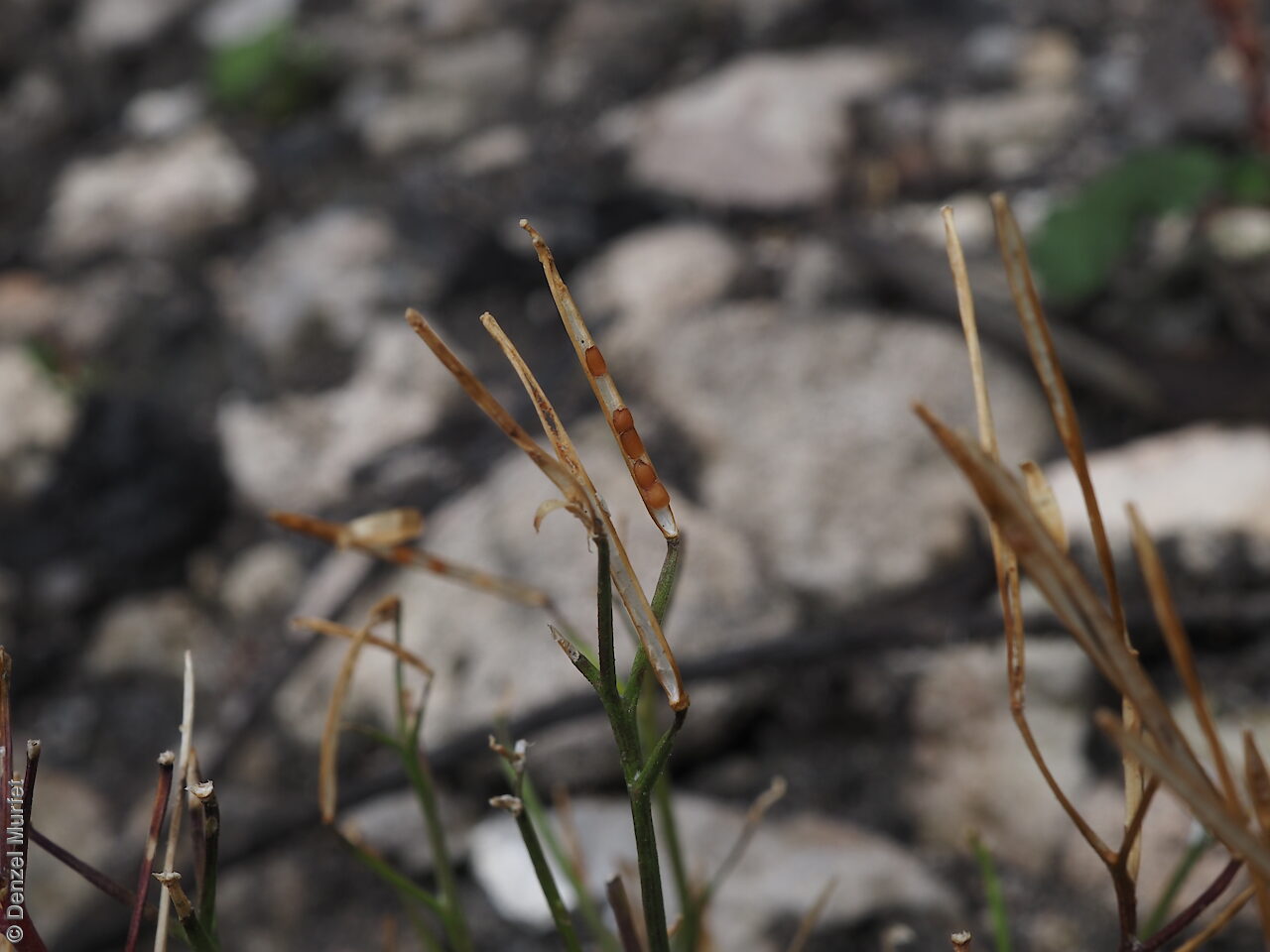
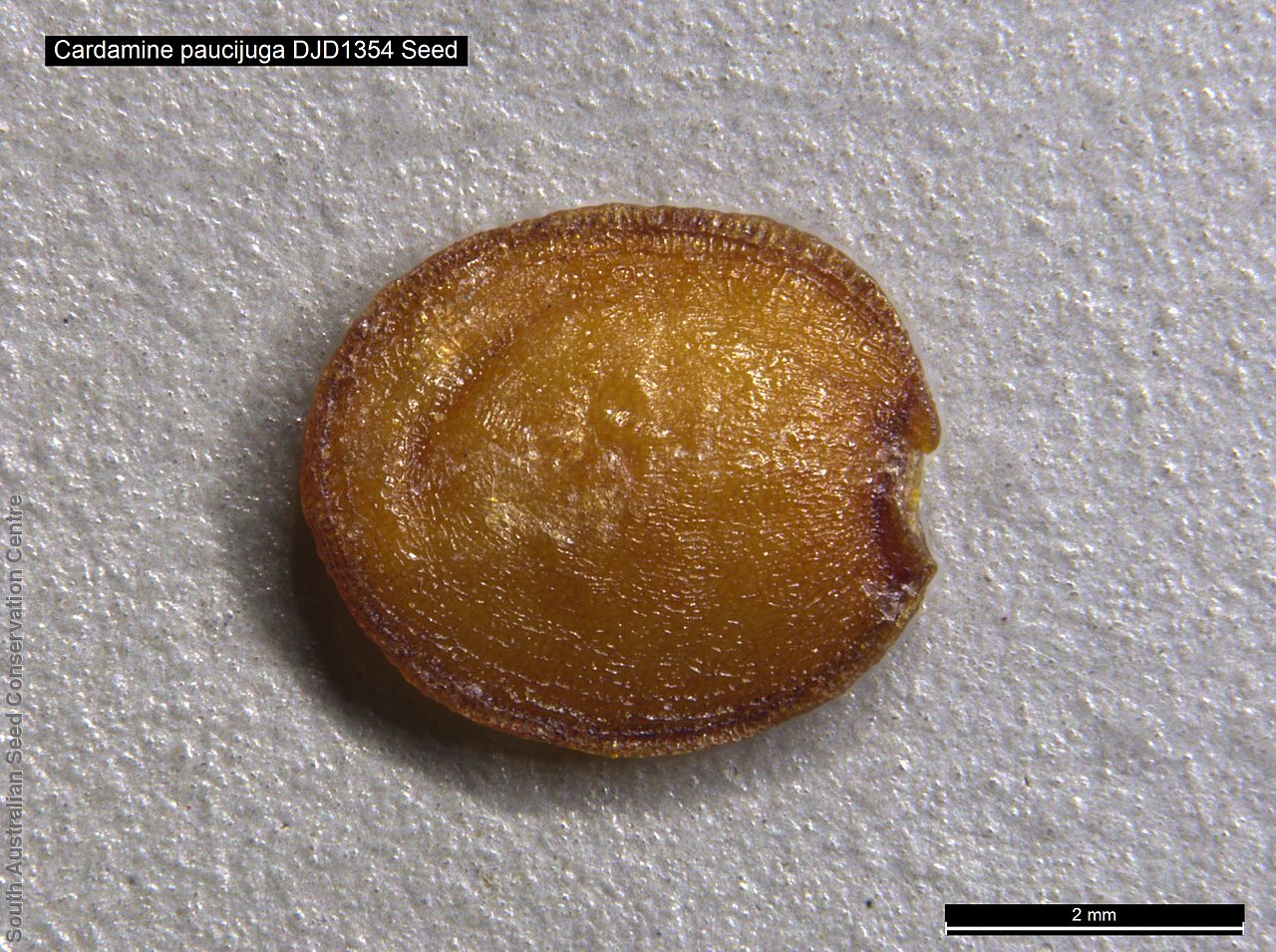
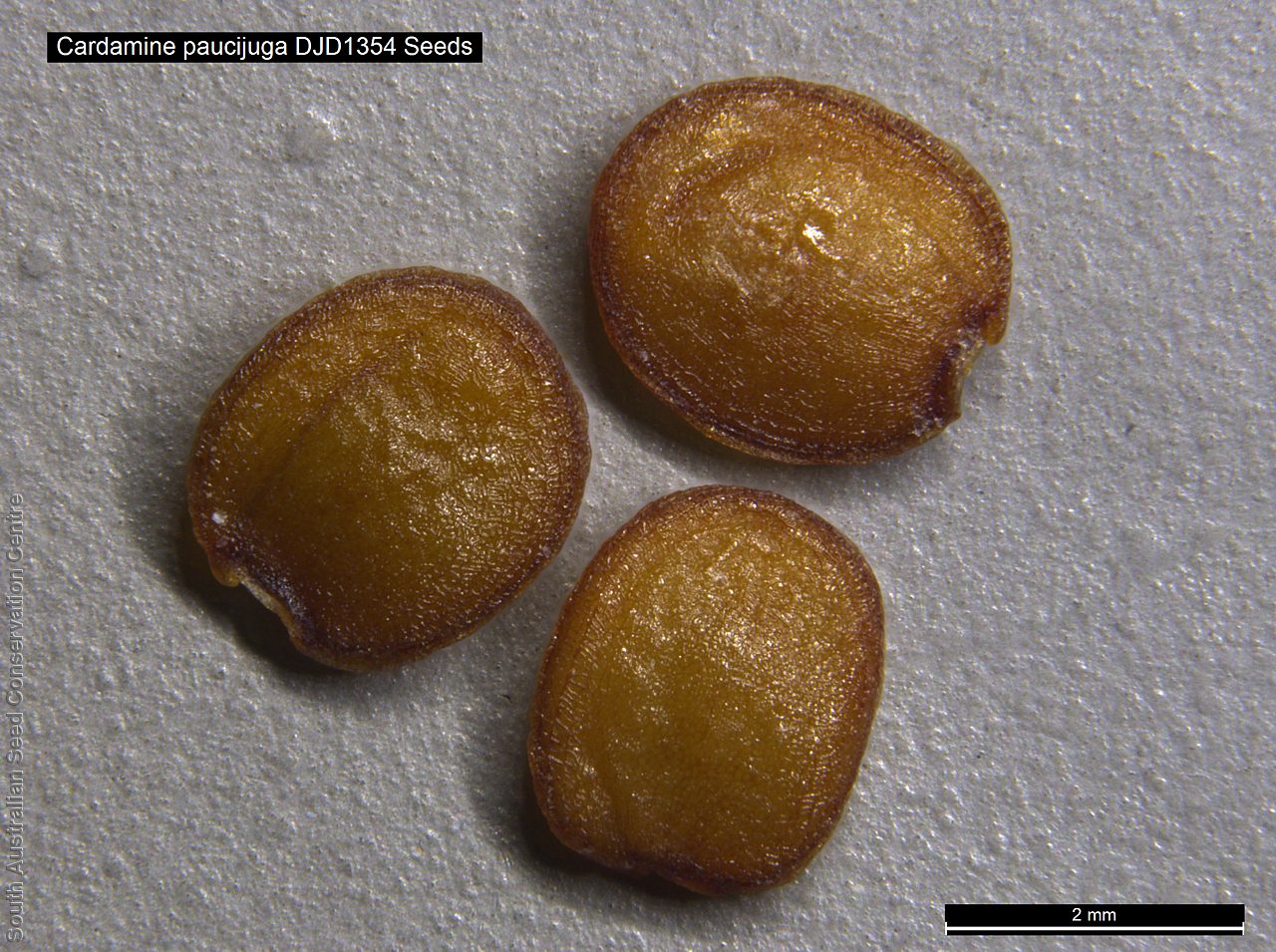
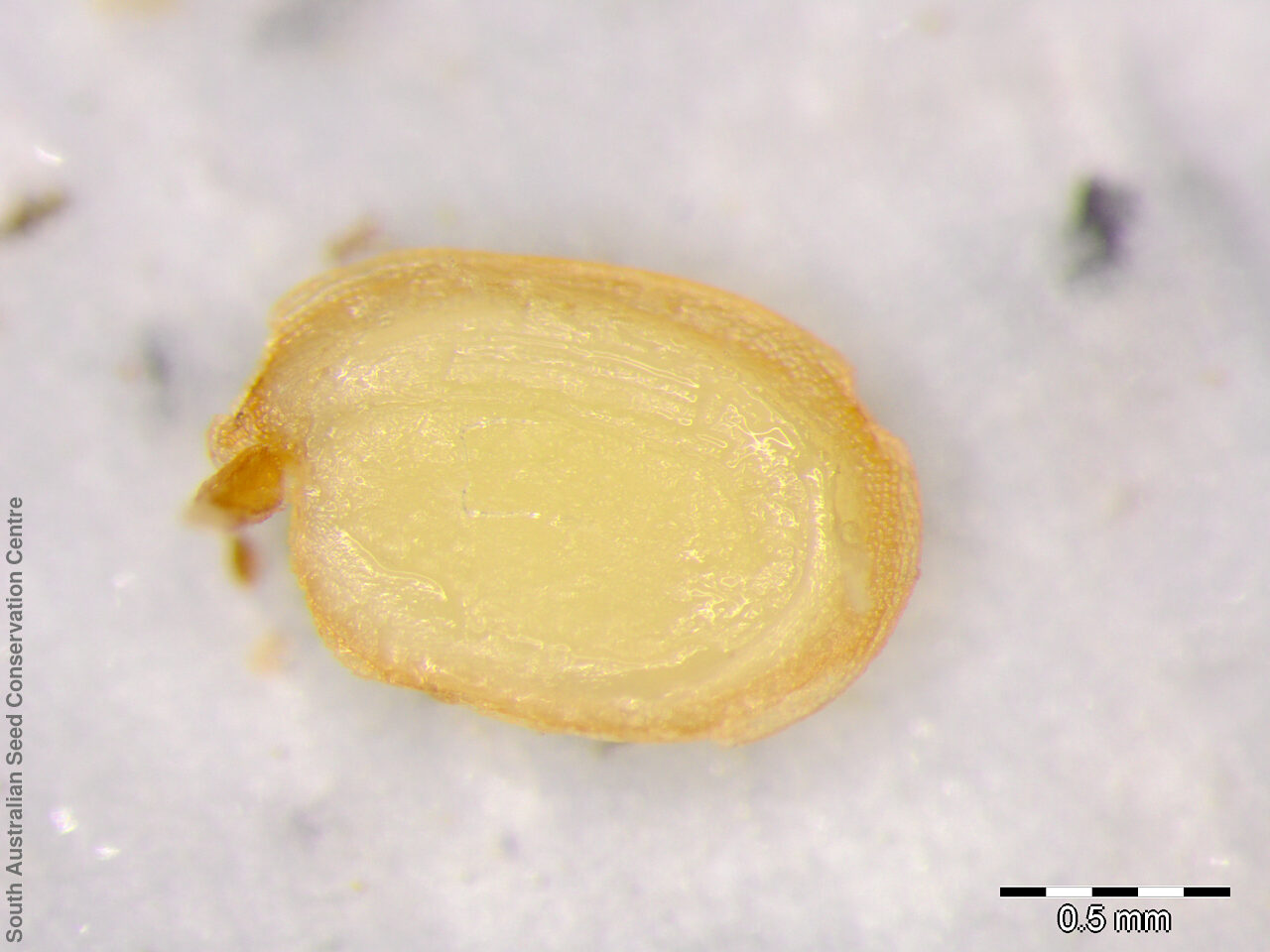
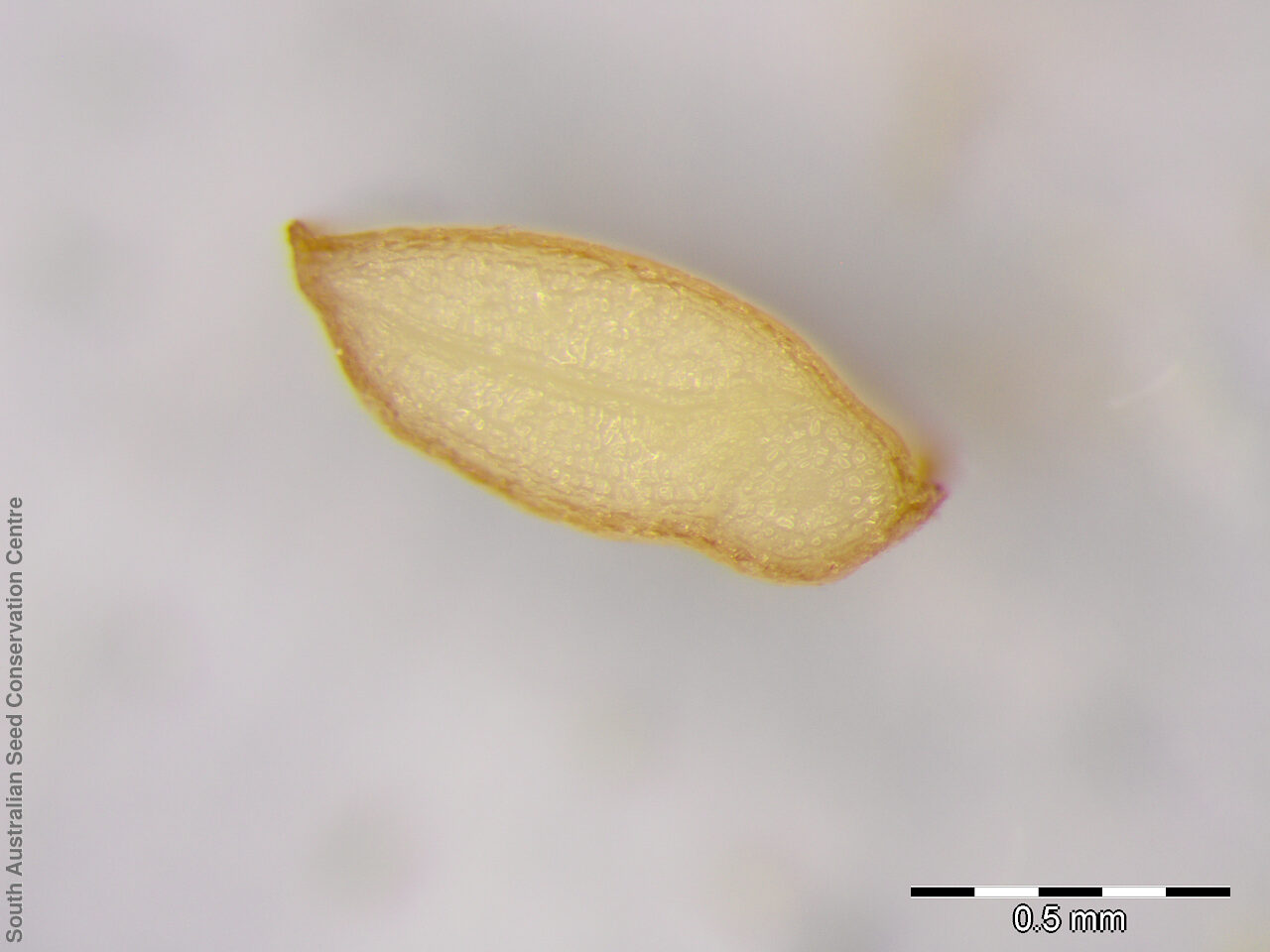
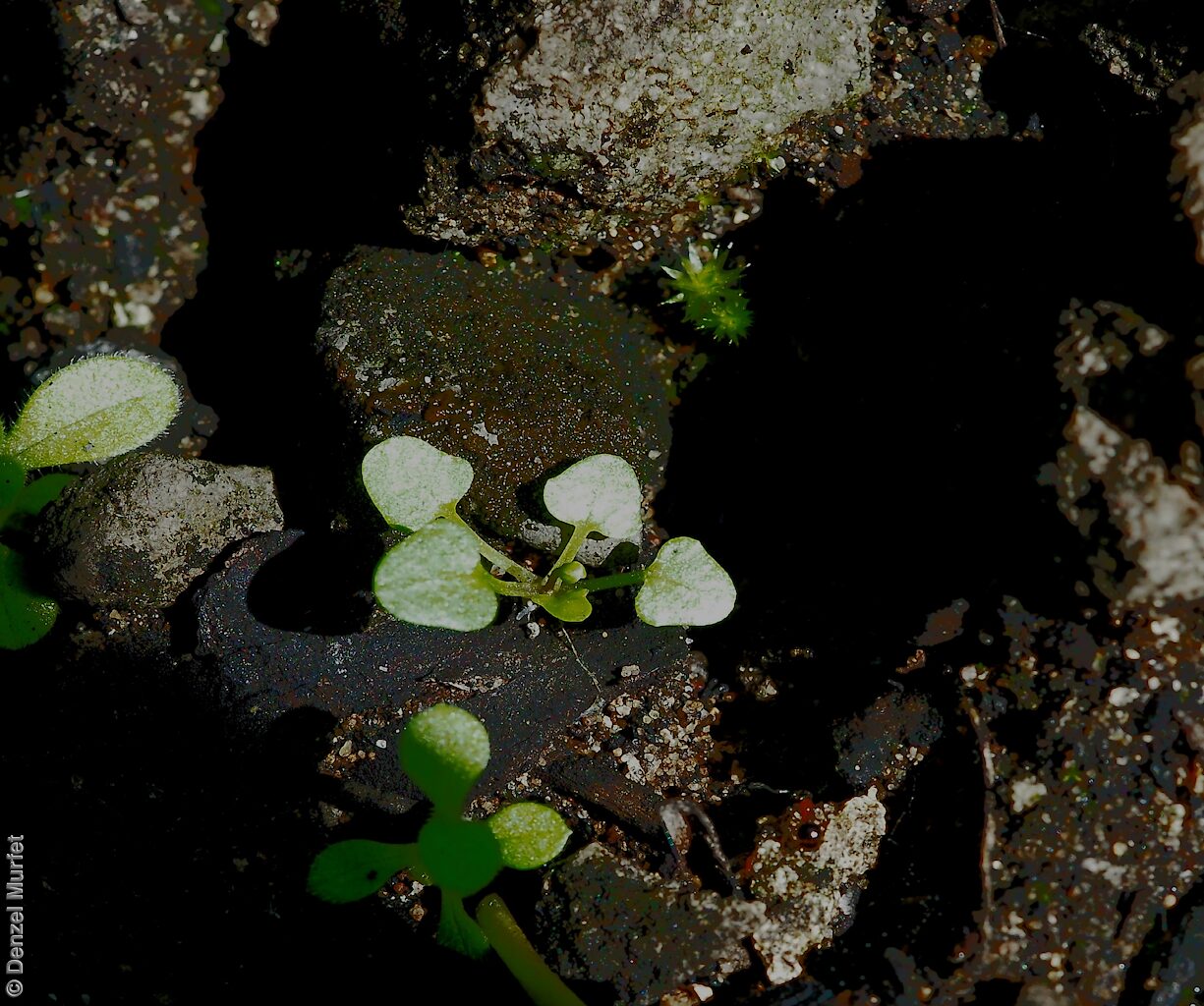

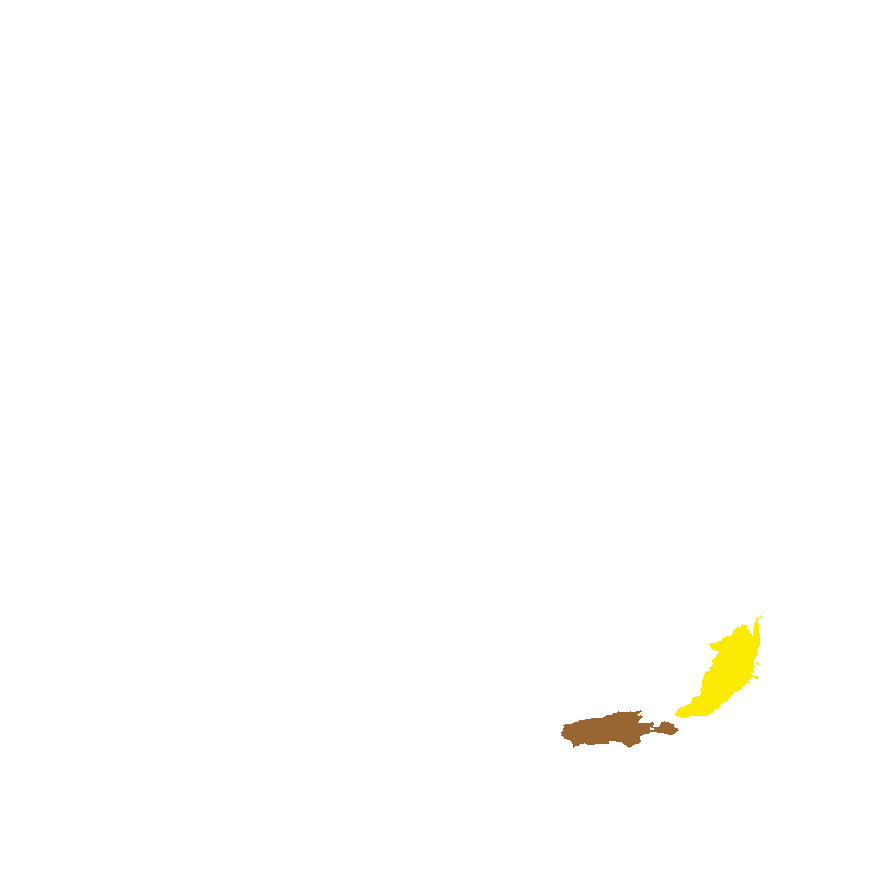
Prior names
Cardamine intermedia ssp. antipodum
Etymology
Cardamine from the Greek 'kardamon' a name given by Dioscorides for a species of cress, an Indian spice and derived from the Greek 'cardia' meaning heart and 'damaein' meaning to blind, alluding to the reputed heart-strengthening effects of the plant. Paucijuga means few leaflets.
Distribution and status
Found on Kangaroo Island, southern Mount Lofty Ranges and the lower South-east in South Australia, growing in rich soils in moist to dry habitats. Also found in Western Australia, Queensland, New South Wales and Victoria. Native. Rare in South Australia. Rare in Western Australia, Queensland and Victoria. Common in New South Wales.
Herbarium regions: Southern Lofty, Kangaroo Island, South Eastern, Green Adelaide
NRM regions: Adelaide and Mount Lofty Ranges, Kangaroo Island, South East
AVH map: SA distribution map (external link)
Plant description
Annual herb to 40 cm long, glabrous, taproot persisting, commonly also with fibrous roots with stems slender, erect or trailing. Leaves thin. Basal leaves long petiolate, pinnate, rosetted, to 12 cm long with terminal leaflet with a cordate base; lateral leaflets petiolate. Stem leaves several to 12 cm long; pinnate with 1-3 pairs of lateral pinnae, often long, pinnae oblong-elliptic to fusiform, mostly entire. Flower spike few to many pink or white flowers. Flowering between June and November. Fruits are long pale brown pods to 3 cm in length, splitting into two. Seeds are small orange-brown flat reniform seeds to 1 mm long and 1 mm wide. Seed embryo type is bent.
Seed collection and propagation
Collect seeds between September and December. Collect maturing pods those turning pale brown with orange seeds inside. Be gentle with the pods as they split open easily. Place the pods in a tray and cover with paper to prevent seeds from popping out and leave to dry for a week. Then rub the dried pods gently by hand to dislodge the seeds. Use a sieve to separate the unwanted material. Store the seeds with a desiccant such as dried silica beads or dry rice, in an air tight container in a cool and dry place. Seed viability is usually high.
| Location | No. of seeds (weight grams) | Number of plants | Date collected | Collection number Collection location | Date stored | % Viability | Storage temperature |
|---|---|---|---|---|---|---|---|
| BGA | 6,000 (1.01 g) | 50 | 20-Sep-2007 | RJB74297 Southern Lofty | 19-Sep-2008 | 85% | +5°C, -18°C |
| BGA | 1,000 (0.27 g) | 25+ | 11-Nov-2008 | TST594 Kangaroo Island | 20-Jul-2009 | 100% | -18°C |
| BGA | 6,600 (1.05 g) | 50+ | 8-Oct-2008 | DJD1241 Kangaroo Island | 20-Jul-2009 | 100% | -18°C |
| BGA | 5,700 (0.778 g) | 50 | 31-Aug-2021 | DJD4034 Kangaroo Island | 7-Jul-2022 | 100% | -18°C |
Number of plants: This is the number of plants from which the seeds were collected.
Collection location: The Herbarium of South Australia's region name.
% Viability: Percentage of filled healthy seeds determined by a cut test or x-ray.